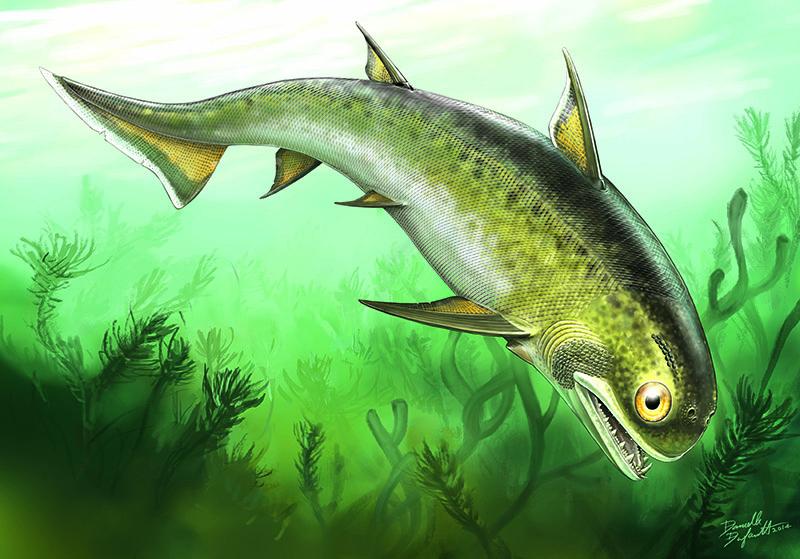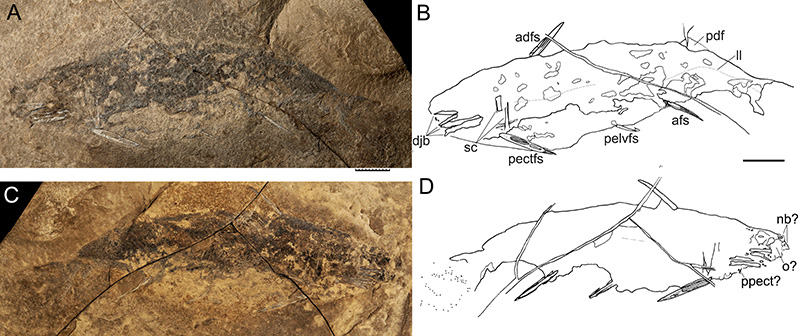A SILURIAN “SHARK” TALE
Published
Categories
Author
Blog Post

What comes to mind when you hear or read the word “jaws”? For many, it will be the eponymous 1975 Hollywood blockbuster, starring a memorable mechanical menace in the form of a ravenous Great White Shark – along with a few notable human actors, of course. Or perhaps it invokes images of beasts of a slightly later cinematic – but much earlier geological – vintage, and you conjure up one of the slavering carnivorous dinosaurs depicted in the Jurassic Park series. Whatever your imagination runs to, aquatic or terrestrial – living or extinct, it will likely involve some sort of nasty animal with a backbone and lots of pointy teeth in those snapping jaws.
But it hasn’t always been that way. Vertebrate predators with definitive jaws and teeth did not make their evolutionary debut on this planet until sometime around 440 million years ago, at the beginning of the Silurian Period, and long after the likely origin of jawless vertebrate animals in the so-called Cambrian Explosion. These most ancient gnathostomes (from the Greek words for ‘jaw’ and ‘mouth’) belong to an extinct group of odd-ball fishes called the Acanthodii, whose earliest fossil remains consist almost entirely of tiny mineralized body scales, larger fin spines, and rare jaw bones, isolated or dispersed over rock surfaces. The rest of the internal skeleton of acanthodians was not bony - it consisted instead of cartilage, like sharks and their relatives. This feature, along with a generally streamlined body shape and the rigid fin-supporting spines, has given rise to their colloquial group name of “spiny sharks.” Although there is general agreement among palaeontologists that they predate the evolution of true sharks, the precise affinities of acanthodians have been hotly debated.

The recent discovery by an amateur fossil collector of exciting new evidence in upper Silurian rocks (about 420 million years old) in southern Ontario is now shedding much needed light on the shadowy early history of jaw-bearing vertebrates. Until now, most of what we knew about acanthodians was based on relatively rare, but far more complete, fossils from geologically younger freshwater deposits of Devonian and Carboniferous age, after the group had evolved a variety of traits that tend to obscure their deeper origins. The unique new specimen, generously donated to the Royal Ontario Museum by its discoverer, represents the only near-complete acanthodian from pre-Devonian rocks anywhere in the world, and provides the first clear ‘road map’ of how all the dispersed elements of these very early gnathostomes fit together into a compact swimming predator. It forms the basis of a new paper co-authored by Dr. Carole Burrow (Queensland Museum, Brisbane – a world authority on early fossil fishes) and me in the journal PLOS ONE [published August 5th]. The fossil is assigned to Nerepisacanthus denisoni, a species previously named from only partially articulated incomplete remains found in Silurian rocks in New Brunswick.
The new fossil, consisting of part and counterpart on opposing faces of a rock split, measures just 112 millimetres in length, from the tip of the jaws almost to the end of the tail fin - it likely represents an immature fish. Although difficult to see without close examination, the specimen retains a wealth of minute detail. Working with the authors of the paper, talented palaeo artist Danielle Dufault has painstakingly created a beautiful 2D reconstruction of the toothy little fish against the backdrop of its tropical Silurian lagoon home.
Check out these YouTube Videos for more from me and Danielle on this fascinating new discovery and how we're bringing it to life!


